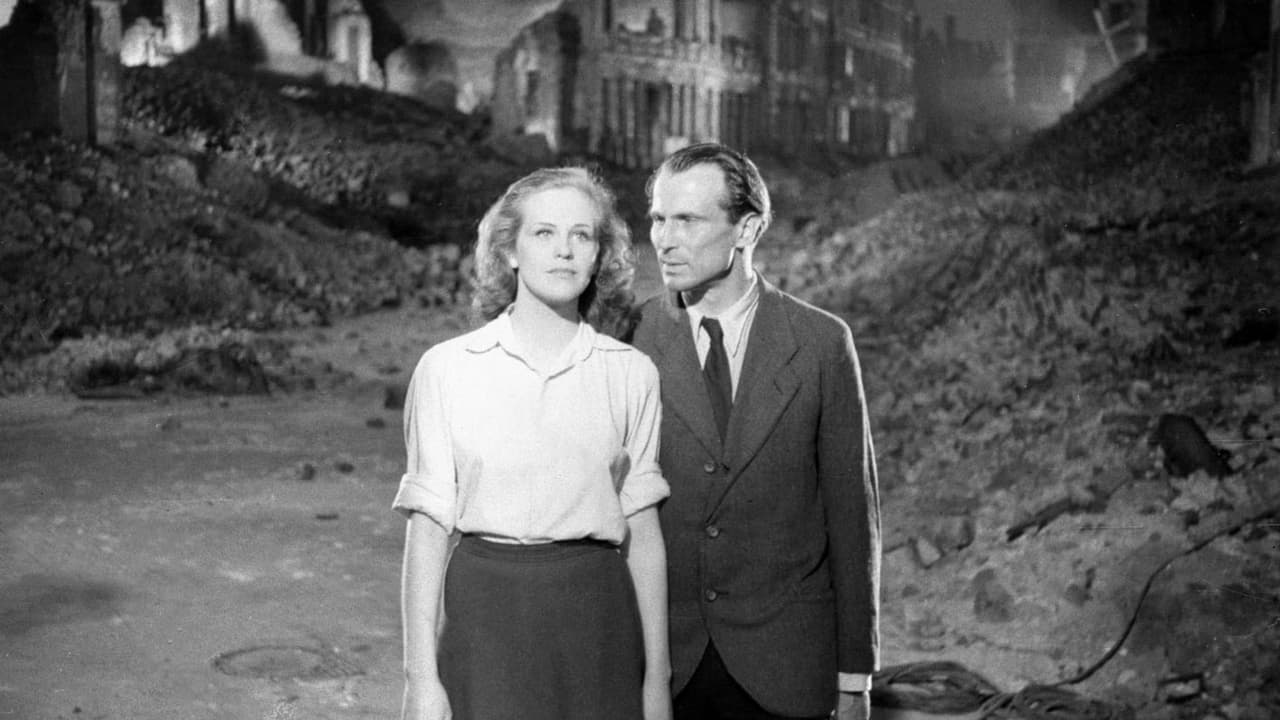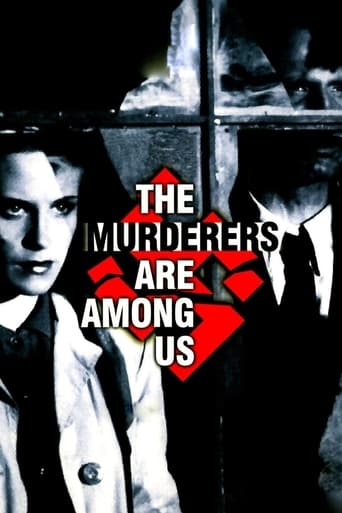

"Die Mörder sind unter uns" or "The Murderers Are Among Us" is a German black-and-white film from 1946, so this one has its 70th anniversary this year already. Writer and director is Wolfgang Staudte and he sure did not waste any time in trying to begin the German coming to terms with the events of the last 10 years. This one is about a man who fought in World War II, but it plays after the war already and the core of the movie is the man running into one of his commanders from the days of war, a man who instructed him and other soldiers to kill many innocent people, including women and children. In theory, this is a very interesting plot, but somehow I was not too well entertained by this story, not half as much as I hoped I would be.And then there is, of course, also the story of Hildegard Knef's character. Knef is certainly the most known actress from the cast here and still a name people now in Germany of the 21st century. I am afraid this cannot be said about Staudte or lead actor Wilhelm Borchert. But back to her character: She plays a woman after the war who comes back home from a concentration camp and tries to live a somewhat normal life again. Her character is mostly included to soothe the emotional pain of Borchert's character, but honestly, she did almost absolutely nothing for me. Her story could have been so much more interesting with her character's background and early on she seemed as much of a lead as Borchert, but the longer the film ran, the more her character disappeared out of the focus, only to get in fully again, pretty much out of nowhere, at the climax scene in the end.I believe the story of these two people had a lot more potential than the filmmaker managed to deliver us here. This could have been one of the truly great films made right afterward World War II, because it was so spot-on with the life at this period and the political impact it had. I also believe the actors, especially the lead actor were better than they could show us here because of the baity script that eventually lacks depth though. This is not a problem of the runtime. The film is fairly short, barely makes it to 80 minutes, but yet lacks focus considerably. I do not recommend "Die Mörder sind unter uns". Thumbs down for this great idea lost in execution.
... View MoreHaving just seen this movie for the first time, I'll agree with some of the other comments.The acting seems theatrical, at times almost political. The movie would make a great double with "The Third Man".What struck me was the significance of this movie. That the Soviets are the ones that made it possible. That forgiveness (and legal justice) not revenge were the goals to move past the horrors of life, a message only brought about by the Soviets changing the ending. Not having known the history of this movie, I wondered about the soviet involvement, when in one street scene children were playing within a stones throw of a wrecked soviet tank. (Or was it wrecked?).It was made in 1946. I can only imagine the hardship for everyone overrun by the wars destructive path. This movie plainly shows that life does continue.
... View MoreOne part romance, one part thriller, and all parts beautifully crafted, "Die Mörder sind unter uns" is an amazing film that shows what happens to good people when they have to rebuild their lives after traumatic events. This movie resonates with symbolism and is imbued with an almost dream-like quality. But do not be fooled, in a certain way, this movie is about breaking dreams and skin to heal the mind and body underneath.Ernst Wilhelm plays the sullen and depressed Dr. Mertens. His past occupation as an already reluctant Nazi officer keeps him from continuing his profession as a doctor, and from staying sober. Enter the beautiful and gentle Susanne, played by Hildegard Knef. Having survived her experiences within a concentration camp, though the viewer is never told what those experiences are; Susanne is intent on rebuilding her life and her war-torn apartment. Can these two broken souls heal one another? Watch for the final showdown between Dr. Mertens and his former Nazi superior, Ferdinand Brückner. This showdown, by far one of the most compelling scenes in cinema history, elegantly brings up the issue of justice and "who" is responsible after war atrocities have been committed. What's black and white and red all over? The murderers among us!
... View MorePrior to watching "The Murderers Are among Us", I believed something: if you exaggerate, then you'll fail miserably. This movie is possibly the most exaggerated flick of all time. But, it succeeds in every respect. The movie focuses on Susanne, who has spent time in a concentration camp, returning to a bombed-out Berlin after WWII has ended. She meets Dr. Hans Mertens, who is haunted by his deeds during the war, especially since his commanding officer shows no remorse.Given that this was Germany's first movie after WWII, it makes sense that they wanted to show that not all Germans were Nazis, and that they were apologizing for what they had done. But mind you, if you watch "The Murderers Are among Us", it will likely blow your mind, just because of how overdone it is. I guess that Germany will never be able to get over the Third Reich.
... View More